(First Posted December 21, 2014) I pulled up behind a new Mini Cooper at the red light and came to a full stop. Then I looked in the rearview mirror, saw the front of an F-150 and came to the quick realization that he was approaching awfully fast and not going to stop…

Before I could say anything to warn my wife there was the loudest “Bang!” I’d ever heard and then immediately another one as our car was catapulted into the Mini and all of the airbags went off.
The next thing I recall is that my wife was screaming at me to get out, there was smoke everywhere from the airbags and we could not see how to get out with all of the white fabric enveloping us. Eventually we both got out and I just dropped to the street and rested there with my ears ringing while seeing people come running from all directions.
Back in the spring of this year, shortly after finishing the original run of my COAL series, my wife and I replaced our VW Touareg with a Mercedes GL450 and then I decided to trade in our Honda Odyssey on this, one of the last 2014 Subaru Outbacks made with the 3.6 liter flat-six engine and a conventional 5-speed automatic transmission.
I had deliberated for a long time and looked at several cars but kept coming back to the Subaru. Not because I was a fan of the styling (In fact I’ve long thought this generation to be by far the least attractive of all Subarus since the 70’s and on top of that find the 6-spoke wheel design from 2013-on to be borderline offensive) but because it is quite roomy inside, seemed well put together, had permanent all-wheel-drive, and would serve as a great combination work and play vehicle while having phenomenal resale value as well as hopefully better than average reliability and durability.
Eventually I took my wife with me to drive an Outback. We started with the 4-cylinder and CVT version, a quick drive revealed that it was quite a bit underpowered at our altitude (for me anyway) and made noises that were not particularly refined. Then we tried the 6-cylinder and found it to be a significant improvement. Smooth, quiet, fairly refined. OK, this would do.
After some more research I was aware than the 2015’s were restyled and due to be released soon and that the 2014’s were ending production any day now. So I spoke with several dealers and in the end was able to do a deal with the dealer in Boulder (about an hour away) for a car that was in the pipeline to be built and about four to eight weeks away, depending on transit. We agreed on a trade-in value for the van and they let me drive it until my new car was ready at the end of April.
There had been no published pictures of the new model yet and the entire time I was waiting I was kind of secretly hoping that it would not be a stunner from a styling standpoint. When it was finally released I noted that the new model looks a bit smoother but basically very similar so I was happy.
Subaru builds these in their factory in Lafayette, Indiana with 45% US/Canadian parts content and 45% Japanese (including engine and transmission); the unpredictable part of the order process was the rail shipment, with so many trains apparently being diverted to oil production, there was a three week window within which the car would arrive at the Denver rail yard. Once it arrived there, it was unloaded and delivered to the dealer quite quickly.

As the regular readers know, I’ve bought plenty of cars in my lifetime but not that many brand-new ones. Picking up a new car at a dealer is always a treat. In this case I took my son with me and the dealer had us in and out within half an hour, totally painless and even the finance person was pleasant to deal with and accepted “no, thank you” as an answer the first time…
The color of this car is Venetian Red Pearl with a Black leather interior. The 3.6R Limited’s are pretty well loaded up with most imaginable options, since it was the end of this model series, the dealers were offering fairly significant discounts (Not quite up to large pickup standards but certainly notable) along with 0% financing for up to five years. I’ll always take the free use of someone else’s money but still gave them the old van as a trade-in and covered the taxes out of my pocket as I tend to do.
The car drove very well; plenty powerful enough, quiet, smooth, and somewhat economical. Only regular gas is required and while the sticker reads 17 City / 25 Highway with 20 Combined I averaged around 22-23 mpg with a mix of mostly city driving which in fairness around here generally does not really consist of any stop-and-go. Weirdly enough, I realized my garage now contained two different water-cooled 3.6liter flat-six engines, the other being in my 911, which gets pretty much the same mileage but sounds surprisingly different doing so. (and is a little quicker…)
The Outback in the North American market differs a bit from the rest of the world, most noticeably in the cladding and roof rack areas. We have more cladding at the bottom edge of the car and our roof rack is a much bulkier affair than the sleek unit sold elsewhere.
What our rack does have that is not obvious at first glance though is integrated crossbars – they swing out and lock into the opposing side, the newer models (since 2013) also let them be locked in a couple of different positions front to back. A very nice touch, out of the way when not needed, and right at hand when needed.
The interiors of these are a comfortable place to spend time with generally hard wearing and durable materials. The dashboard is not soft, which I don’t care about as I have never found myself caressing the dashboard in any car anyway.
The door panels, while decently contoured, come across as a bit flimsy, when pushed there is a lot of “give”. In addition, Subaru is a bit behind the curve in regard to modern amenities and general ambiance.
The fake “wood” in the upper trim levels is quite unconvincing, even in the matte finish of ours. And the stereo, even with the Harman-Kardon branded system in ours, is merely adequate with a somewhat sub-par display.
At least the Bluetooth integration worked easily and seamlessly. I suppose all of that is par for the course when you buy the upper level of a vehicle line that at its most basic level currently retails for just over $20,000. In any case, it was easy to clean and seemed like it would hold up over the long haul.
The HVAC system worked great, the heated seats were wonderful, and the space in the back helped me to haul stuff to renovate a house over the summer. For reference I was easily able to fit a standard size washing machine in the back with the rear seats folded with room to spare, and when in the up position three kids fit across the rear bench for at least shorter trips around town with one still in a booster seat. In front there is enough space so elbows are not fighting for center console space either.
As a bonus the kids could all fasten their own seatbelts and even the smallest could open the door from the outside, neither of which I can say for the mid-size SUV loaner I am currently driving. Oh, the joys of what is basically a car…
As time went on I just came to appreciate the basic goodness of the car more and more. It just did its job, unobtrusively, non-flashy, and always willingly. Kind of like a good dog, I guess. Which reminds me, this is also the car I used to take our dog of 16 years to the vet this summer when it was time for her to enter the great rabbit field in the sky…
Here in Colorado, Subaru Outbacks are pretty much the “Official Car”, they are simply everywhere. I started to play a game where if I was stopped at a red light I would see if the light would change to green before I saw another Subaru, since I bought the car in April, I have not once lost!
At least one other Subaru was always there and more often than not it was another Outback. The 4-cylinders seem to outnumber the 6-cylinders about ten to one in my opinion, and now I am starting to see significant numbers of the newer version as well. I also belong to a Subaru Outback forum and posted there about this wreck, one of the respondents was another local Outback owner that happened to pass our accident right after it occurred…
I was just starting to look around to see if I could find another set of wheels for snow tires. We had our first snow a few weeks back and while the car was very sure-footed, snow tires are always helpful for cornering or stopping in the white stuff no matter how many driven wheels you have.
We’d even named the car “Mary” (something I’ve never done before) after my youngest’s preschool teacher at the time, a feisty older woman who we weren’t sure about at first but grew to really appreciate; she had bought a virtually identical car in the same color a couple of years earlier, so we thought it would be fitting.
I sort of let the kids decide which of several colors we should get (of the few that were available) and was happy when they chose the red. Subaru is one of few makers that still makes cars in actual colors, although some trim levels are severely limited in that regard.

Which brings me back towards the end (or the beginning) of this story, about seven months and 8000 miles since we took delivery of the car. Subarus have been known as safe cars for some time now and they definitely use it to their advantage in their advertising – Have you seen the “They Lived” campaign? YouTube it if you haven’t. Wow.
Anyway, I didn’t really know or have time to think about it when that F-150 was barreling at us and while I have no doubt that my 911 is a strong car as well, I am glad that we were not in that and I am sure the lady in the Mini that was in front of us is glad we were her buffer. As long as Subaru spends money on crash safety they can keep on having hard dashboards as far as I am concerned.
The car, at first glance, does not look that bad. However it did sacrifice itself for us. The truck hit us at an estimated speed of 40-45mph, and we were then pushed into the Mini. The truck ended up slightly ahead of where the Mini was originally and we were both thrown all the way across the intersection so that the wrecked cars didn’t even block the cross traffic when all was said and done.
The truck hit us pretty much square on the back, smooshing all of the back end in and crumpling the right rear fender a bit as well as reducing all of the panel gaps to Lexus-like tiny gaps. Then we hit the Mini with our front right, causing a lot of damage there and the cars “locked” together, the tow truck drivers had to work for a while to separate them.
However, all of the doors still opened. The roof was bent a bit (the sunroof glass is flush at three corners and sticks up about an inch in the other corner.) Both front airbags as well as the side curtain airbags went off.
The damage to the truck was just astounding as well. There are a lot of trucks around here and when they get in wrecks usually the truck looks pretty good and if a car is involved, the car usually looks significantly worse. This truck was just destroyed as far as the front is concerned at any rate.
Most of the people at the scene were quite impressed with the Subaru although I completely understand that the whole point is for the vehicle to absorb the impact energy so the soft squishy people inside don’t have to.
The body shop adjuster said the damage amounted to well over $25,000 before he stopped calculating and recommended totaling the car. Apparently the engine and transmission still worked but at least a part of the engine cracked and broke (camshaft cover?). The car really did sacrifice itself for us which I suppose is the whole point of the engineering that goes into it.
As much as I like the cars we call curbside classics, I would not want to have been in most of the cars that we all love to read about on these pages in this situation. My wife and I both pretty much walked away, we are sore and a bit bruised and both have a few lingering things that should hopefully improve over time but all in all are basically happy that it wasn’t worse.
The driver of the truck admitted fault to the police (said he felt light-headed and passed out), and since it was his girlfriend’s truck, her insurance stepped up and agreed to pay the entire claim (the insurance in this state goes with the car, not the driver, remind me not to let others drive my cars!). I don’t want to divulge details, however as regards the insurance company’s payout for the loss of the car itself, we were quite satisfied with it.
As for me, I now get to do that thing that my wife says I like the most, that being looking for and purchasing another car. I really thought this would be it for a while, but it was not to be. I’m not quite sure what to replace it with, the new Outbacks with a 6-cylinder are so rare I would have to order one which would take several months (which I may still do, I took a look at one and they are quite a big improvement, especially inside) or there are several other ideas I have been playing around with…Stay tuned!




















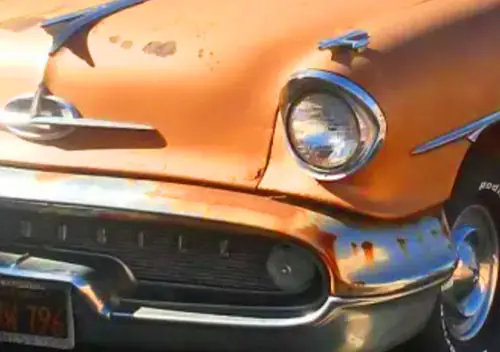
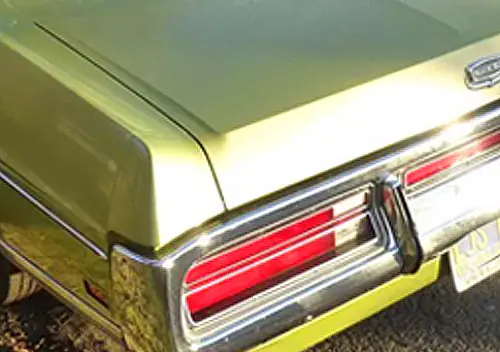
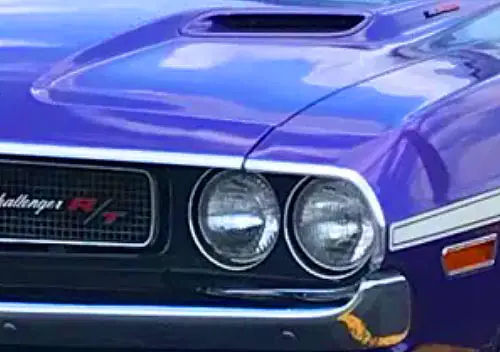

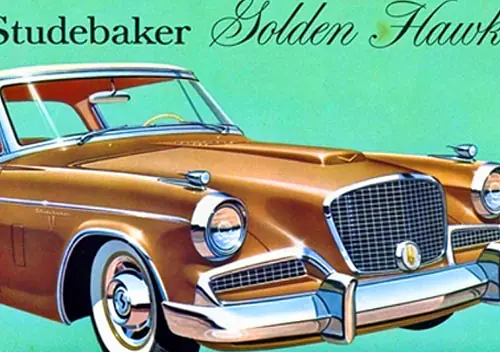
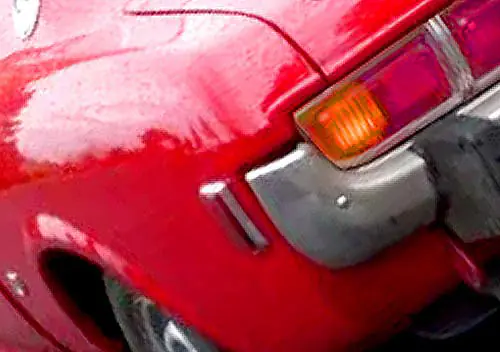
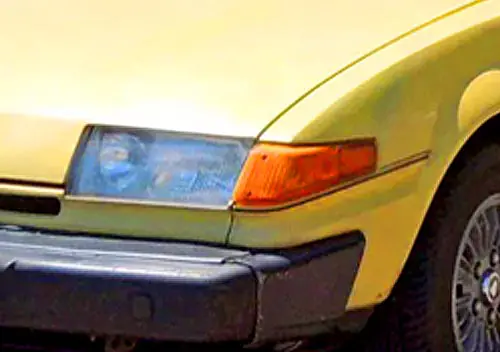
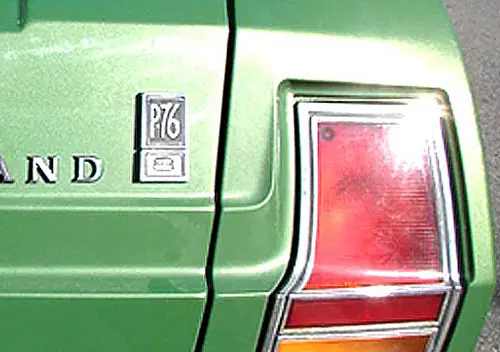
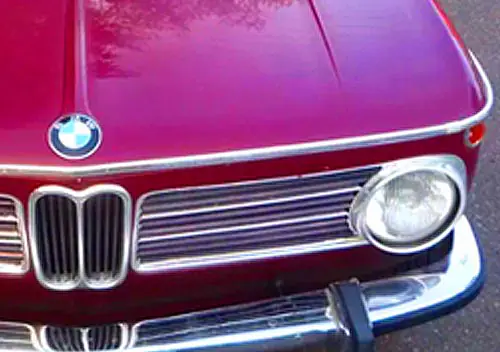
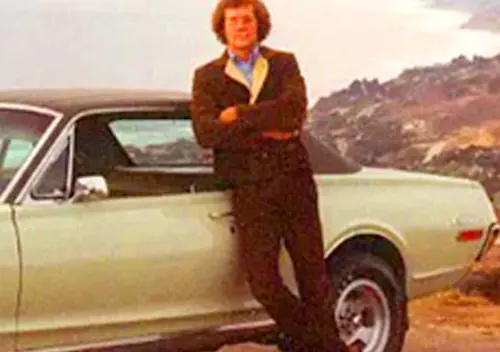
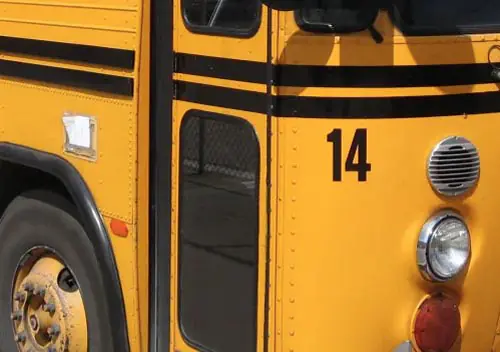
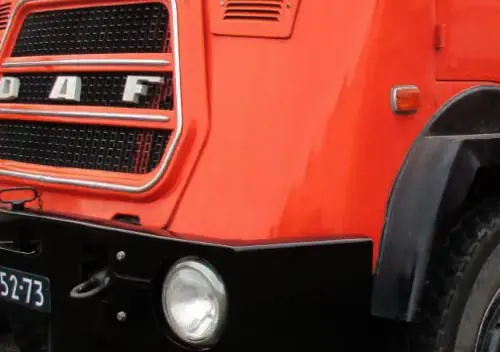
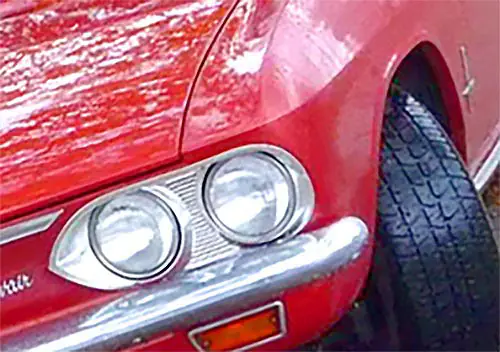
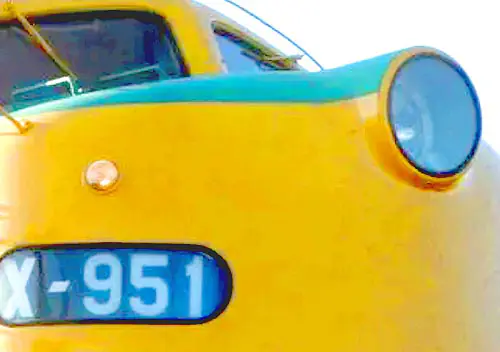
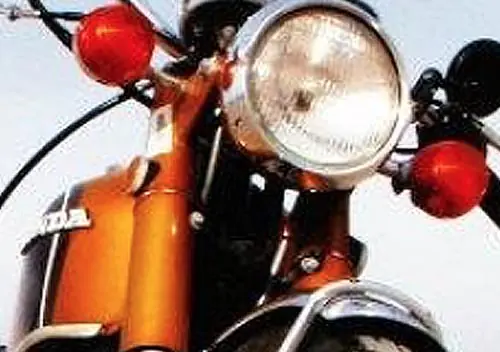
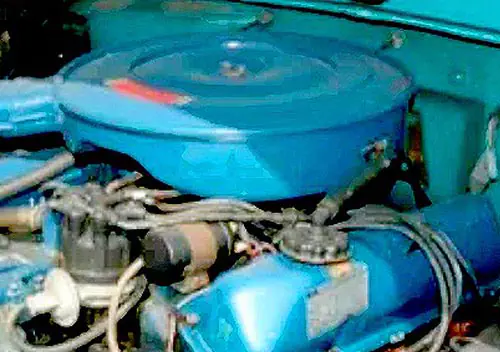
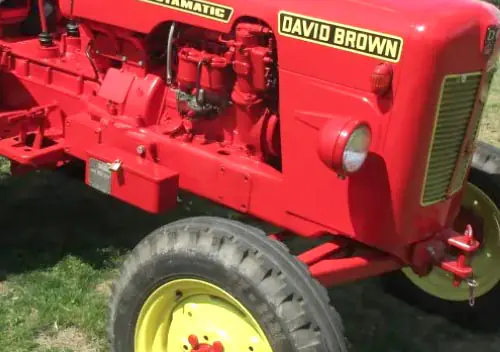


Jim,
I’m so sorry to hear about the accident. However, I’m glad everyone is OK. I’m looking forward to reading about your next vehicle.
Jim, I’m glad you and your wife are doing well after this unfortunate event. The Subaru certainly did an outstanding job.
Thanks, we’re basically OK. The car did do its job very well.
I second that, glad everyone is ok.
Oh crap ! .
Glad you’re in a safe vehicle and no the deathtraps I usually drive .
Be aware that the soft tissue in your back / neck may take a few days to begin showing you the real damage sustained ~ as a cripple , I can tell you it’s no fun to have signed off on the Insurance Claim only to discover you’re FU-BAR for life later on .
I’d be _really_ pissed off if this happened to me , I’ve only ever bought one new car , in 1989 for SWMBO .
Just yesterday some Lady bumped the back of SWMBO’s old Mercedes going over 5 MPH , I got out and looked , didn’t see any damage and so I waved her off .
-Nate
That was very nice of you. Right around this very time many years ago, I was driving my parents’ Electra and peeked at a car lot (surprise) not paying close attention to the road, and rear-ended an old Suburban. Atrocious sound as well, but zero damage beyond my bent license plate holder. He patted my young self on the back and said to have a Merry Christmas. He saved my skin and my insurance premiums; to this day I applaud his character. I’ve never been in an incident all these years later; lesson learned!
Well ya know ;
Personal responsibility and all that jazz .
She didn’t try to zoom off and I didn’t see any damage so whatever .
The Foster boys didn’t even seem to notice .
I was *VERY* glad I wasn’t driving my European Spec, Diesel Sports Coupe as it has tin foil chrome things that most assuredly are _NOT_ for ‘ bumping ‘ into .
I’ve been hit ,dented , smashed and so on many many times , the only time I ever got one thin dime was the Gypsy Cab guy who blew a red light and ran me over , breaking my skull in three places , destroying three vertibrae in my neck and shattering my L1 spinal vertibrae , he had rinky-dink B.S. Taxi Co. insurance but at least they paid my medical Bills and a few $ for my Moto , of course the 23 years worth of V.C. and sick time I used up surviving ? ‘ tough luck buddy ‘ .
life isn’t fair so move forward and don’t sweat it .
-Nate
Very good story. I drive a (very old) Volvo and I get where you’re coming from, despite the fact that yours was new and mine is only sorta new to me.
@ Nate: Would you clarify what SWMBO stands for? I’ve been racking but still can’t figure it out.
Thank you
She Who Must Be Obeyed 🙂
LOL 🙂 Thank you….
Speaking of SWMBOs, mine was involved in a similar accident in her 2000 Forester. She had been rear-ended by an Altima which in turn was rear-ended. The only damage to the Forester was the to rear bumper cover. The Altima ended up being totaled. She had almost forgotten about the whole thing until the dealer pulled up the Carfax when she traded it for the ’05 we have now.
This article is from 2005, but it explains the difficulty that rescue crews can have when performing an extrication from a Subaru. Scroll through the photos and check out the one of a WRX b-pillar that had resisted all efforts at cutting….
http://www.firehouse.com/article/10503660/subaru-ring-shaped-reinforcement-frame
Glad to hear you are alive and not permanently injured.
As long as you’re looking for something to replace the Outback, what about the Mazda CX-5? You can better that appalling 17 MPG City rating by 10 MPG, and have your AWD.
I don’t really get Subarus, they always seem about 5 years behind their competition in efficiency, design, and reliability (they seem to be coasting on a reputation from 20 years ago, and they have never been as good as Honda/Toyota). The only thing they used to offer over the competition was AWD, but there are so many choices now that it seems moot. I know they have achieved cult status, and their will always be a segment of the population that won’t even consider anything else.
That said, the Subie saved your life, and it’s hard not to love a car for that. But Mazda’s safety ratings are right up there too.
Hi,
Well, the 4cylinder Outback gets much better mileage but too gutless. We looked at the CX-5, but it is a bit small for the five of us. I do like Mazda’s though, my first car was a Mazda (’79 626)
I am amazed at the condition of that truck compared to the Subaru. Just wow. I’m glad none of the children were with you.
FWIW, I drive an ’02 Outback with the 3.0 6 and every option, and absolutely everything on it still works and looks good at 160k miles. My son’s ’06 Mazda 6 4 cyl 5 speed, with 118 k, OTOH isn’t aging nearly as well (though it’s a hell of a lot more fun to drive). Headliner is sagging, AC knob broke off ($18!), one power window is dead and another doesn’t work from the driver’s seat, the clock resets itself on “cold” mornings, and the steel rims are all rusty. All little stuff, but still, it’s not even 10 years old, in car-gentle San Diego.
I’ve seen that happen before. The driver of the F-150 braked hard right before impact, and the resultant nose-dive means his bumper went under the rear bumper of the Subaru. Thus the face of the truck took the brunt of the impact. Had he not braked, Jim’s car would have been messed up all kinds of worse.
which means I don’t buy the guy’s claim that he “felt light-headed” and “passed out.” He obviously braked, so it’s more likely he just had his head up his ass or was texting.
That’s exactly what happend to my 1995 Explorer a few months ago.
10 mph collision results in a slightly dinged tailgate to a 2009 Tahoe, and a pristine front bumper, but demolished grill, headlights, hood, fender, and a re-located core support which destroyed the radiator and power steering pulley, bent the ignition module in half, and re-adjusted the drivers door. If it wasn’t for the fact the engine overheated and has a coolant leak or crack somewhere, and the trans is already kind of gimpy at 336,000 miles, I’d have fixed it, but that nose-dive is what killed it.
Yup the F150 driver was braking hard at the time of the impact for certain which is why the damage is relatively high on the F150 and low on the Subaru.
My wife was rear ended about a month ago, twice by the same person. She claimed that the lens fell out of her glasses and she was reaching around on the floor to try and find it when she hit my wife the first time. My wife was actually moving during both impacts. The people in the business that the collison happened in front of came out and said they were expecting to see something like happened here since they heard two crashes.
My bet is that the lens was knocked out of the frames by the air bags, and that seemed like a good excuse to use. Apparently the cop did take a look at the person’s cell phone, presumably to see if she might have been texting when it occurred. Of course the driver that hit her had no insurance or even a license.
The estimator at the body shop questioned my wife as to what hit her since there was damage down low, presumably when the person was on the brakes hard, and damage up high when the person hit her while she wasn’t braking hard.
yep. early in my driving career (and I mean early, I was 16) I was in the middle of a 7-vehicle chain reaction accident. I love-tapped the car in front of me and there was no visible damage to either of our cars, but behind me a Dodge Ram ass-ended a little Civic. Same situation, the Ram’s front bumper went under the Civic’s rear bumper. The Ram got effed-up good, the Civic had flesh wounds by comparison.
All three vehicles did exactly what they were supposed to do in a situation like this. The front ends are designed with lots of crush zone, to absorb the brunt of the impact energy. The rear ends are designed to be strong, to protect occupants , gas tank, etc.
Note how the front of the Subaru is much more deformed than its back end. The Mini’s back end didn’t deform much either.
As long as the front ends absorb a lot of energy, the rears don’t have to so much.
I have the same generation/type Outback as yours–’03 with the H6, just passed 150,000 miles (this past Thursday), and by far the best car I’ve ever owned. I’ll probably keep it for another 50K.
Jim, glad you’re OK, sorry your new car had to sacrifice itself for you, although that means the engineers did their jobs well.
I am glad you’re as ok as you can be after that. I’m really impressed with the Subaru.
Yeah, we were as well. Actually everyone there remarked on it. There is lots of little non-obvious damage to the Subaru but my body shop guy figured someone will probably put it back together since it is so low mileage and sell it with a salvage title. (Just not him at his rates…)
Glad to hear you’re both OK. Driver of the F-150 was “light-headed and passed out”…I’d wager that’s code for “texting my OTHER girlfriend”…
Yeah, I wonder about that too. Those fools fiddling with their phones while driving are accidents waiting to happen. And carmakers don’t help by trying to provide similar capability on dashes, as if radios haven’t been bad enough. Is instant connectivity worth one’s life, or the lives of others?
I often see cars drifting out of their lanes nowadays, esp. onto the shoulder, yet to be fair, they don’t always seem to be distracted by their phones. Once while leaving work, the truck in front of me went off the pavement not once, but twice. This all is a “puzzlement.”
Well said.
Agreed – that “light-headedness and passing out” excuse is an attempt to cover up for a lot of driving mistakes – just plain being stupid and/or negligent, texting, etc…
Disclaimer: Apologies to anyone who legitimately got light-headed and felt faint or passed out while behind the wheel.
Too bad the cops didn’t seize his cellphone records to confirm whether he was texting. That seems a lot more plausible than feeling “lightheaded”.
Should be SOP in a case like this.
As I posted above when my wife was recently rear ended and the person claimed it was due to the lens falling out of her glasses (which we belive happened from the air bag) the cop did ask to see the person’s cell phone.
Wow, Jim, that’s awful. I’m glad you’re well, and I’m also glad that Ford got properly messed up. If I were in your position, I’d have some choice words the driver of that truck. Driving a gigantic vehicle like that is a privilege, not a right, and requires a degree of conscientiousness.
Would an Audi Allroad fit the bill for you guys?
Well, as I was laying on the ground I heard someone screaming at the driver with a bit of a “vocabulary”. Turned out it was my wife 🙂
Allroad – You know me well, my friend! See my next post…(No decisions yet though)
Probably as good for the F150 “driver” as anyone else that your kids weren’t in the car, then. If she was like that with just herself and you, her in Full Mama-Bear Mode must be a sight to behold!
I’m glad you two made it out of that scary situation relatively unscathed, Jim.
I occasionally wonder if the airbags on some older cars, like my 2001 PT Cruiser, would fire as designed in a collision such as this. Aside from onboard diagnostics, how do you really know? It’s not like you can (or want to) actually test them.
I tested old air bags when someone turned in front of me in my 96 Odyssey about 4 years ago. They worked just fine, which was a good thing.
Glad everyone seems to be basically OK. Nate has some good advise regarding signing off before you are sure there is no long term injury. I have been considering a Subaru in the future and your car held up well to protect you and your wife. So glad your kids were not in the car. Looks like the trucks frame rails may have slid under your car and helped reduce the impact by collapsing the softer portion of it’s front end. I’m also impressed how the fragile looking Mini held up in the rear considering the front end damage on your car. Hope things go better for you this Christmas from now on.
Did the irresponsible pick up truck driver at least get ticketed for making this accident happen?
(muttering to myself words and apt phrases that I should not be saying on a Sunday…..)
if you hit someone from behind you’re practically guaranteed at least one ticket regardless of where you are or what excuses you come up with.
Yes, careless driving. It guaranteed him to be at fault with all insurance companies involved. He admitted fault to everyone as well at the scene.
It was prolly some damn KID ! good thing he wasn’t driving on my lawn ! =8-^ .
-Nate
(who has to sleep in a chair often due to the chronic unending pain m can’t really ride a Motocycle any more and suffers greatly when I’d doing routine works like engine overhauls)
Well I’m sold on the Outback now. That is quite impressive. Time to trade/sell our 13 Optima which we have been mulling over the last couple of weeks. BTW did this happen in Fort Collins? Looks like it.
BTW, pretty much any modern car would have been safe in a collision like this.
On no doubt our Kia would have saved us, we have just been having buyers remorse for not getting a wagon or crossover to haul our canoe and camping gear to Montana the Western Slope etc…my 01 Dakota has been doing this duty for years but it is coming up on 300k so…..
Yes, Fort Collins (Drake and Stover to be exact if you know it). Yeah, most cars would probably be OK, but Subaru seems to push their safety and I think the car did a fantastic job. (And this is not even the newest model anymore). Feel free to write me through Paul if you want more info.
I thought that was a Transfort bus in one of the pics! Loveland resident myself, so glad all involved were ok. Merry Christmas!
Merry Xmas to you too. Oh, if you ever need a Realtor, look me up. 🙂 We can talk cars AND houses!
The Boulder dealer has the best internet pricing for Subaru’s by far, BTW. Huge discounts even on the new models.
Happy to hear you both fared so well. How about the gal in the MIni? Did her airbag go off? Time was when a rear ender would not do it. Are newer cars designed for airbag deployment in such a scenario, or did yours go off when you hit the Mini?
Her airbag did not go off but she ended up hitting her head on the steering wheel and had a bit of a bruise. I assume ours all went off after hitting the Mini but not positive, it was all in the same split second. Would have been worse without seatbelts as well, ours were stretched out and locked and both front seats were bent back as I noted when I got back into it at the salvage yard.
glad your ok the back of the Subaru is really solid and it actually appears the truck that hit you got the worst of it
That’s a scary incident Jim, I’m glad everyone was okay. On the bright side, you do get to pick out another car.
I’m glad you are okay, Jim.
This is the EXACT reason I’ll never drive a 60’s car as a daily driver.
Imagine had this happened with no seat belts air bags or head rests. If you managed to love through it, you’d have a long and painful recovery.
Thanks, yep, I was thinking about that as well afterward. It’s all well and good to be in control of whatever you’re driving, but harder to control what happens when you are stopped. But in any case, when things go wrong, they tend to go wrong very fast…
Holy frijoles! Thank goodness for modern automotive design that protected you. Sorry you had to go through that.
Rear end someone and your automaticly in the wrong here no excuse will extract you, Shame about the new Subaru but probably a good thing you were in a recent model car, Once you can see damage to something like a roof panel you are looking at a write off it take immense pressure to bend the main structure of a modern vehicle when hit square on diagonally not so much, So hoping you are completely ok I guess its car shopping time yet again what next?
Same law here.
I’m currently finishing up flogging a rented (courtesy of insurance company) Grand Caravan to Orange County, will arrive in a few hours and respond more then, thanks all for the well wishes!
Well I am glad you two are ok and at least it was three modern vehicles that got tangled up instead of a mix. I take it the Mini was also totalled, but I bet someone might find a way to rebuild the F-150.
Considering the model bloat Subaru has undergone it should not surprise me that a 2014 Outback gets worse fuel economy than a 96 Legacy Estate (26-27 MPG), but it does. Believe it or not my folks were going to Cash for Clunker our worn out 87 Caprice Estate for an 09 Outback, but my folks found it too incredibly ugly.
The 4cylinders get much better mileage, we had the 3.6 liter H6 though and traded power for mileage.
Very unfortunate situation but I’m glad you got through it ok. The Subaru definitely did its job though in keeping you safe in what could have been a very bad scene.
Getting to pick out another vehicle is the silver lining though!
I’m very glad the late, great Subaru took such good care of you! This is the exact type of collision that I live in fear of. I can make up for the lack of ABS and airbags in my 1992 Prizm somewhat by not tailgating and by keeping my eyes open, but there isn’t much you can do when you’re at a dead stop and the guy behind you gets “lightheaded.”
Exactly. There are also a LOT of large trucks like that one around here (actually, an F150 is one of the smaller ones, usually it’s F250’s and F350’s nowadays). I’m in SoCal for a few days and immediately noticed that there are a lot less trucks around here and more similar sized cars.
Glad you and your wife are safe. That’s the main thing. It’s true, a CC would not have faired as well in a similar accident. Subias are everywhere here in Western Washington too.
Glad everybody is okay. I too doubt the “lightheaded” claim, but it’s not impossible. Even there, the guy should have pulled over if he was not in a condition to drive.
Good to hear you got out of it safely, Jim, though it’s sure messed up your Christmas. Might take a while to get over the shock of what happened, and as someone said above, be on the lookout for any sign of a whiplash injury – they’re often delayed.
I’m very impressed at how the Subaru held up. That said, I’d find it hard NOT to buy another one. You know how safe they are, And is there really anything comparable to the Outback at that price point?
It happened on the 5th of December so we are well on the way to recovery now, but thanks!
No, not much else out there that is new, but several used options. See newer post for info…
Good news that you’re all OK, and a clear lesson that while CCs have their strengths, strength isnt always one of them.
I’m sorry to hear that it happened. I hope no one was hurt. I’ve had that happen. It’s *not* fun.
Thank God you’re OK, Jim. I can sympathize!
Ooh, is that a SWB 500SE? Or 380SE? Can’t quite decipher the missing badge shadow…Gorgeous color, what a bummer!
Won’t be a 380, it’s a later model 126.
KJ
It’s a 300SE — here’s the CC I wrote about her:
https://www.curbsideclassic.com/my-curbside-classic/curbside-catharsis-travels-with-dad-and-brigitte/
Yet another Subaru driver here. Great to know you’re OK, and that the car took the beating, but saved you. Subaru with 3.6? We are driving Tribeca with 3.6, mileage is not as good as yours, but another 3.6 Subaru.
Nice rig, we looked at a couple before going new OB. I really like that you can use regular gas with the 3.6, apparently the older 3.0 requires premium. Although it’s less important right now – I actually paid $1.72/gallon yesterday at Costco in Northern Colorado. It’ll go back up again soon, no doubt.
Whew. Glad you are OK. It’s interesting that the front of the Outback sustained more damage than the back. I was in a similar accident in a Subaru wagon (1980 pre-Outback type) about 30 years ago but with different damage patterns. I was stopped in traffic and rammed by an Econoline with some kind of non-factory battering ram of a front bumper, and pushed into the Firebird in front of me. The damage to the ’80 Subaru was the opposite of yours; the front end suffered relatively minor damage but the rear of the car was made about a foot shorter and I was picking pieces of the tailgate window out of my hair. The Econoline, unlike the truck in your wreck, looked barely damaged.
Thanks – I wonder how those old Subaru pushbar bumpers affect the older cars, remember those? They were usually white and a big tubular affair. I’m sure if there was a big roo-bar type of thing on the F150 that hit us the results may have been a bit different…
The thing is that those push bars not only increase the damage to the vehicle that was hit they increase the risk for the operator of the car because it does affect the crumple zones and the air bag sensors.
I recently picked up a retired police car for my daughter and going though the upfitter’s guide I found online it had a very specific warning about push bars and the fact that they need to be attached to only the crash bar (the bumper structure) and not to the frame as it will affect the performance of the air bag and crumple zones. Of course the remains of the push bar that was on her car included supports that go directly to the frame and bypass the energy absorbing crash bar supports.
Makes me wonder about the liability that the mfgs who make and people who install push bar/grille guard products are exposing themselves to.
Sorry to hear about your crash, Glad you and your wife made it out OK though.
Thank you very much, appreciate it!
Wow, JK…that looks pretty nasty. Glad you and your family are ok. Couldve been MUCH worse!
If you get another Subaru wagon you will never really be pleased with it. I did that a few years back when our SAAB 9-5 was totaled. Time to get something completely different.
Jim, glad you and the wife are ok.
I think you should take these pictures with you to the Subaru dealer and tell them that you’ve done more and better advertisement for SOA on this one post than their entire advertising team has for the entire year!
Tell them you’ll take a brand new Outback off the lot for 30% off!
Good luck. I’m sure you and your family have much to be thankful for this Holiday season.
I’m a bit late here Jim, but I’ll echo all the good wishes above. Your Outback is (was?) a dead ringer (minus the US-spec cladding and roof rack) for my parents’ recently purchased Outback – which is Camellia Red in Subaru-NZ speak, but looks the same. It’s funny, but as they get older I worry about my parents driving, so yeah, good to see the Outbacks are designed really well for crash protection. And I hope my parents never have to go through what you and your wife did!
For the record, although my folks’ one is the 2.5 CVT, it drives absolutely beautifully. Far nicer than any of their previous Outback or Legacy wagons. Unexpectedly quiet and the ride is positively lush, with a sense of being isolated from running gear NVH that I haven’t really experienced before.
Anyway, enough about that, all the best for the next car!
Scott, you know what, you are right, dare I say the ride of the Outback is almost Brougham-y! 🙂 No, really,they do ride very nice and are very quiet at cruise, certainly an improvement in that regard to the older ones (as they should be I guess, progress and all that…). Our color was called Venetian Red Pearl, which is very slightly different than the Ruby Red Pearl that was offered 2011-2012 but you wouldn’t know unless they were side by side if even then. I’m sure Camelia Red is either the same as one of them of very slightly different, looks great especially when clean. I wish your parents all the best with theirs!
Very glad all of you are safe.
I’m a previous Subaru owner now with Volvo – I have high regard for both makes. In fact, i think most of the folks in the 80s/90s who bought Volvo wagons now buy Outbacks. Volvo kind’a lost them with their prices and somewhat iffy reliability when under Ford’s stewardship. Subaru stepped right up with what those folks were looking for – safety, practicality, reliability, and a little bit of quirkiness…..
I also agree that the previous Outback’s (and Legacy) styling was a step backward – the new 15 version seems better styled, though still somewhat generic. Though I thought your color and options made for a very handsome wagon.
My first Subaru was a 79 Wagon – little backpack of a car – that would just scamper through upstate NY winters.
Good Grief, Charlie Brown! Glad to see that you are both OK.
My sister just picked up a 2015 Outback a couple of months ago, and really likes it. 4 cyl/CVT. She was really bummed that she missed the 2014s, as that was the last year for a 5 speed stick.
Isn’t it amazing the sensation when that air bag goes off? The smoke and acrid smell really do make you think something is on fire. I can still hear the loud BAM from when the bags went off in the accident I had in my 96 Odyssey a few years ago. This soft, squishy human was happy to have them.
Jim, having been in the same situation in my 93 Legacy Touring wagon, I can say that being a bit sore is better than the alternative. In our accident the other driver told the police that he hit us going about 50. We were stopped and pushed into a telephone pole. The car is amazing from a crash standpoint. After 493,000 miles, I just dropped my deposit on another one with Eyesite.
Glad you are ok.
What a scary and violent thing to happen, but if it’s going to happen, a modern Outback is a very good car to be in. As a side note, I somehow caught just from a passing glance at the street signs that this is about a mile from my brother’s place, some 1,400 miles away from where I live…
These are the kinds of events I dare not think about when I’m in my Spitfire amongst logging trucks here in the northwest.
Funny how the look can be deceiving…
Let me tell you what happened to my brother’s former wife and her 1993 Toyota Corolla in Aurora, Colorado. Her car was hit in the rear by Cadillac Escalade who failed to stop at the intersection. The impact had demolished the entire rear trunk, shattered the rear windscreen, and bucked the roof slightly on her Corolla but caused a little damage to the Cadillac.
My sister-in-law and her daughter (at time five-year-old) were uninjured aside from being dazed. The police officers were marvelled to be able to open all of four doors on her Corolla effortlessly. The body shell was still intact without any deformation. However, they had lot of trouble prying the driver’s door open on the Cadillac despite small damage to the front bumper and grill.
My brother didn’t understand why the insurance wrote Cadillac off as totalled despite minor cosmetic damage. That is until he visited the salvage yard to take the photographs of his beloved Corolla. Cadillac was parked behind Corolla, giving my brother a better perspective of the collision.
He noticed the gap between front fenders and front doors widening toward the bottom and realised that the truck-like frame underneath was bent, rendering Cadillac totalled. No wonder…
I’ll add that I too am glad that you two weren’t badly hurt. A collision like that can screw up anyone’s day.
The comment on crash safety of modern cars reminds me – the woods where we walk a lot is next to a large fire department training facility. One day we were walking and heard a god-awful metallic racket. Out of curiosity we went over to see what it was; they were practicing with extraction tools on several junked cars.
Damn. I’d say you and you wife were definitely lucky that the F150 driver braked. A few years ago my sister lost her ’07 (IIRC) CRV in a similar accident, some jackwad slammed into the back of it at 45 or so. Never braked, so the floor structure took the brunt of the impact. Buckled it so badly that the rear doors were jammed shut, and one of them was deformed enough that the glass exploded. Folded it up like a wet cardboard box. Turned out the moron was texting…
I’m very happy that everyone wasn’t badly hurt. Thank you for a well-documented story. I work in the insurance industry and I find stories like this very interesting.
I’m on the same Outback forums, although not frequently, and did not make the connection until now. We have a ’13 Outback, also in Venetian Red Pearl, albeit a four-cylinder Premium model. It was startling to see those pictures of what basically looked like our own car. I am glad the Subie did its job, and that you and your wife are okay.
60 – 65 mph is crazy speed to approach a traffic light !
Having been hit in the very same way, nowadays I instinctively tend to stop not too close to the next car, whenever possible, and leave some sort of leeway in case I see, hear or feel any vehicle coming up too fast behind me. Once you’ve been there, your reptile brain keeps going around that place.
Glad you did not suffer any phisical damage.
Actually, I can’t believe I forgot, but I rear-ended a 2007 Legacy wagon at traffic lights four years ago! What a swine I was! In my defence it was in an unfamiliar city, and I reached across for the map book to see where I needed to turn at the lights; it took only a split second’s inattention to not notice the Legacy in front was stationary, not moving… Learned my lesson, the car’s got GPS now! No-one hurt and the Legacy was barely damaged – its towbar took the brunt. You can see in the pics below the damage a towbar can do to the car that hits it! I took full responsibility, and the insurance sorted the Legacy out immediately. My mighty Laurel was unfortunately a write-off, due to the radiator crossmembers and inner guard bending (although the chassis was fine and the car was perfectly drivable), but I bought the ‘wreck’ back and spent the payout fixing it – it cost way less than the payout to fix, and I’m still driving and loving it today, so I kind of won! Still think of the lady I hit though, ’twas an embarrassing wake-up call for me and I was glad she wasn’t injured.
Man, even that Mini Cooper is stronger than the Ford F-150.
Some of Jim’s past posts, including the one about the car he bought to replace the Subaru, are down.
If they were originally presented after this Subaru, they should be down. All of his installments after this one, such as the replacement car, is scheduled for next Sunday and, as such, is unavailable until then.
Are his previous cars, the ones covered during the last eight to ten weeks for instance, all available?
I think it’s working as it should be now. I de-linked to the list of COALS in this post after reading George’s comment. The prior vehicles that are still linked to in this post seem to function correctly. The next post in the series (the QOTD) is now up and working. The next vehicle is, as Jason said, scheduled for next Sunday and from the backend at least seems to be posted correct but likely not visible to anyone else yet (until next week). But thank you very much for pointing it out!
Owner stereotypes notwithstanding, it’s easy to see why Subaru has a loyal and dedicated following, particularly in those snowbelt states where AWD would come in very handy in the extended winter months.
With that said, the much more common 2.5L engine took a real reliability hit on head gasket longevity. I’ve read that those built prior to 2011 won’t make it past 100k miles before the head gasket begins leaking and needs to be replaced to the tune of $2000 (and every 100k miles thereafter, as well). Is it still an issue with even newer vehicles? If true, it’s a real shame.
My 70year old mother has a 2008 Outback (purchased new, also here in CO, same dealer in fact) with about 120k miles on it and zero head gasket issues so that seems to not be universally true but yes there are more head gasket issues with Subarus than other engines for some reason.
I’m also fairly certain my mother isn’t a lesbian but even if she were there wouldn’t be anything wrong with that as far as I’m concerned. A better stereotype for the women Subaru drivers around here at least that is likely to actually be true is of them usually possessing a higher than average education level, a practical and pragmatic mindset, usually a higher level of physical fitness as well as a good sense of fiscal responsibility.
I can’t speak to the cost of head gasket replacement but while there are obviously two head gaskets I’ll bet with a little shopping one could easily beat that quote by quite a bit.
Yeah, the lesbian/Subaru thing is similar to that of the gay/3-series BMW, I suppose. I doubt either stereotype keeps any non-LGBT types from buying one of those vehicles.
Like I said, in many parts of the US, a Subaru is simply a very solid choice for inclement weather driving and lower-center-of-gravity stability than the higher, small CUVs that are all the rage these days.
As to the head gasket thing, it seems to involve something to do with the coolant having some kind of deterioration effect on the head gasket material. How something like that could occur is beyond me. Maybe it was an ill-advised effort to shave a few pennies on head gaskets. Weren’t there certain years of the Dodge Neon that had head gasket issues, too?
I believe they were aluminum gaskets, probably to deal with heat, and tbey failed through galvanic corrosion with iron or steel block. Subaru has an additive for the coolant that reduced the problem a lot. But it is also very important to keep all the ground wire connections to the body clean; if they corrode and get higher resistance then the elctrons go through the block and head instead and speed up the corrosion a lot. IIRC that’s why it is usually the driver’s side gasket that fails first.
Still seems like a problem they should have been able to eliminate after the first year.
Apparently, the head gasket issue didn’t arise until after the engine was enlarged to 2.5L. Prior 2.0L and 2.2L versions of the same engine didn’t have the problem. While the boxer engine has some advantages, it appears they don’t outweigh the disadvantages, one of which is uneven cooling. The boxer engine configuration is mostly a dead-end for development (as GM found out with the Corvair and, ultimately, VW, as well) but Subaru has been successfully using it for a very long time and doesn’t have the resources to switch to another, more traditional engine design. It’s worth noting that it took some time in getting the brand-new (for VW) inline engine in the Golf right after relying on the Beetle’s flat-four for so long. The boxer’s issues can be resolved, but it’s pricey to accomplish, which is a reason the Porsche 911 is so expensive.
And it’s not like Subaru really needs to change, anyway. As PolarBear points out below, Subaru is selling everything they can build so, evidently, the head gasket issue doesn’t seem to be keeping very many people from buying a Subaru, even the ones with the 2.5L engine.
But the Subaru’s 3.6 doesn’t seem to have an issue. Cylinder size is about the same as the 2.5l four and you’d think there’d be more stress across the longer head if it were merely an engineering resource issue as opposed to the (also) 3.6l boxer-6 in my 911.
I think most manufacturers just don’t do flat-4’s as they are more expensive than inlines to build. And there is usually enough room to package an I-4 underwood as opposed to V6 vs I6 or V8 vs I8.
It’s certainly odd how it’s only the 2.5L that has the issue. I can only surmise that a flat-four over a certain engine size is the culprit. One of the major complaints of Subarus has been that they’re underpowered so they surely must have felt it was worth the effort to make the engine larger, despite any pitfalls. Has anyone ever made an automotive flat-four over 2.5L?
It’s worth noting that there hasn’t exactly been a stampede to the V4 configuration, either. The only one I can think of off the top of my head is the old Saab Sonnet.
I think 2.5l is the max for automotive, even Porsche’s 718 flat-four Boxster/Cayman tops out at 2.5l. Probably due to that being near the crossover point where a six makes more sense. Same with inline fours, while you see 2.7’s and even 3.0’s they aren’t particularly common/widespread with many/most manufacturers just going to a smaller V6 at that point. But apparently Lycoming makes flat fours up to 5.9l (!) for use in light aircraft. To me, reliability in aircraft would be of much greater importance than in any car 🙂
Other V4’s would include Ford and Lancia (not currently of course). But again, there likely isn’t much need, why have two of everything when it all fits with one in an I-4 configuration.
And of course Honda is the V-4 champion in many modern motorcycle applications. (along with a flat-four in the original Goldwing)
I suspected as much. I vaguely knew that the boxer-type engine actually works well in aircraft applications (for whatever reasons) so figured there would be some flat-fours in there. I just didn’t know how large they got. I wonder if there are any aircraft radial fours. Seems like it would be a logical choice since radial engines of any sort were always popular for airplanes.
Likewise, the V- and flat-four usage in some motorcycles. BMW has used boxers in motorcycles for ages, as well. Maybe in those applications where there is a much better airflow makes flat- and V-type fours more viable. In a car where the engine is completely enclosed, heat is retained and the cooling problem rears it’s ugly head when a four reaches a certain displacement size.
I’m sure matters are significantly helped by those applications that do not have anywhere near the same sort of emissions regulations as four-wheel, street vehicles.
3.3 Liter inline fours once roamed the earth in great numbers. 🙂 Albeit with much shake and vibration.
I have always wondered if a boxer configuration would work with a big four as a way of cancelling out the vertical shake inherent in the inline version. It would seem that two cylinders shaking left while the other two shake right would make for a smooth runner. Unless the left and right shakes come at different times so that the car feels like it is in a perpetual shimmy.
Well, there is always John Z. Delorean’s 1961-63 Tempest senior compact that used the half-a-389-V8, 195 CID (3.2L) Trophy 4, colloquially known as the “hay baler” for the amount of shaking it did.
JPC: boxer engines are inherently balanced, as their pistons cancel out each other. It’s the only engine configuration that is inherently balanced regardless of the number of cylinders. Karl Benz built the first one in 1896.
Even a boxer twin is remarkably smooth, which explains why they were used so successfully on BMW bikes for so any decades, as well as a lot of other bikes and European cars. Of course their exhaust sound is not even, an inherent aspect of the design.
A boxer four is even smoother, mostly because the uneven exhaust sound is now spread over four cylinders, but it’s still uneven sound-wise, and explains the distinctive growl of Subarus with sport exhausts as well as VWs of yore.
Lycoming still builds a number of aviation boxer fours, and their O390 has 390 cubic inches. Smoothness in an airplane is very important, which explains why practically all new IC general aviation engines since WW2 are horizontally opposed boxers, in 2, 4,6 and 8 cylinder configurations, using the building block system.
Lycoming’s O720 boxer eight has a mighty 720 cubic inches.
Thanks for the input on this. You confirm what I had kind of suspected.
One of the “Cars in the Park” coming up is a 1928 Bentley “4 1/2 Liter”, actually a 4.4 L (270 cu in) inline 4. I wasn’t present when it was fired up and driven away but it must have been quite a shaker.
Inline fours have multiple imbalances, but it’s not just the size that makes them worse, but also the rpm it’s operated at. The giant inline fours of yore shook some, but the harmonics that we feel in more modern fours without balance shafts are due to the increasing engine speed.
The 1911 Fiat racer had a 28.5 liter inline four, but operated at very low rpm.
The 4.4 L Bentley “engine speed was limited to 4,000 rpm” says the Wikipedia. That’s a pretty modern speed, though its normal operation range must have been slower than our modern engines.
Its article on inline-4 engines has a detailed explanation of where the vertical shaking comes from. “…piston acceleration and deceleration is greater in the top half of the crankshaft rotation than in the bottom half, because the connecting rods are not infinitely long, resulting in a non-sinusoidal motion.”
Fascinating topic I wasn’t aware of before.
A very significant (perhaps the only) issue is not enough head gaskets on the EJ25 engine when it came out in 1998 or so. Previous Subarus had no issues with head gaskets. And the Subaru boxer four has no issues with head gaskets, as it has more head studs (it’s almost a completely different engine). And I suspect the six cylinder is the same way too. Why Subaru didn’t just go with the turbo design for their NA engines after some years is a mystery, but obviously they had invested a lot in the tooling for the NA boxer four, and kept trying to improve the gasket, and kept thinking they had solved the issue.
FWIW, our 2000 Forester didn’t start leaking from the head gasket until it was 15 years old and had 170k miles on it. But I did put in the Subaru gasket leak additive fairly early on, as per their recommendation.
Subaru’s closing in on 800,000 sales this year, and the only thing constraining them is production capacity. Whatever people think is or is not the issue with head gaskets, it’s pretty obvious the general public doesn’t care. I’ve always approached Subaru thinking the 100,000 mile head gasket is no different than the 90,000 timing chain on some other brands. Just do it and call it a day.
I’m impressed with how the car held up after being smacked by the pickup. That’s awesome!
I can’t say I’ve ever much liked the timing belt versus chain trade-off. I’d much rather have a noisier timing chain that lasted significantly longer than a quieter (but short-lived) timing belt that needed much more frequent replacement.
But I agree that, at least in the Subaru 2.5L case, if you’re going to have to change the timing belt at a certain point, anyway, might as well do the head gaskets at the same time.
What a horrible thing to happen! So glad both you and your wife were not seriously hurt. That Sube did an outstanding job protecting you both. I would be so angry with the driver of that truck that’s for sure!
Thank you and yeah, here we are 3.5yrs later and all is good. We were pretty pissed at the time but it all worked out. But I’m sure his girlfriend and her family were even more annoyed seeing as how it all went on their insurance and none of them were even in the truck!
“The driver of the truck admitted fault to the police (said he felt light-headed and passed out)”
That dang phone radiation, it’s a danger to public health! Drivers feeling light headed left and right nowadays!
The front of the truck reminds me quite a bit of what passenger cars used to look like after a straight-forward crash. It’s inexplicable…almost as if…I don’t know, pickup trucks are somehow…kinda…built the way cars used to be, before we knew or cared much about safety, or something. Huh.
This, together with the pics and the rest of the story, remind me of an, um, experience my mother had with her Y2K Outback. As she tells it, she “tapped” the back of a stopped garbage truck. Which resulted in a traffic ticket and $9K+ damage to the car. It was new enough to be worth repairing, but once the bodywork was all done and the car had a new A/C condenser and radiator (“tapped”?!)…oops, now they’re under the hood trying to figure out how come the engine won’t start, there’s more damage apparent: the engine’s sitting cockeyed and one of the mounts no longer lines up.
Car got towed to Subaru dealer. Mother called me all upset because Subaru dealer told her there’d be a delay for needed parts. I called service manager, expressed sympathy for his having to deal with this particular customer, and offered to try to help explain to her (get her off his back) if he’d tell me what’s up. What’s up is she managed to break the front cam sprocket (“tapped”?!), and since nobody ever breaks front cam sprockets they don’t tend to be kept in stock. That and the bent undercar parts (“tapped”?!) kept the car off the road for awhile, but it was eventually repaired and she kept it til 2016.